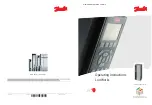
SingMai Electronics
PT9 User Manual Revision 0.3
Page 16 of 38
utilize this to help separate the chroma and luma where they overlap (the chroma information will
have this phase relationship, the high frequency luma information will not).
The PAL subcarrier is shifted 270° in phase every line of a field, so over a two lines of field it will be
180° phase shifted. If we add these two lines together it will cancel the chroma and reinforce the
luma. This ‘line-comb’ filter can recover the full luma bandwidth, but only under certain conditions.
If there is a vertical transition in the image (one line of one colour, another of a different colour)
then the line comb will fail (giving what are called, ‘hanging dots’). Similarly if there are diagonals
in the image then the line comb will fail. In each case the failure can result in higher levels of
chroma, giving the familiar shimmering cross-colour effects on high frequency luma structure, as
shown in Figure 10.
Figure 10 Zone plate image after line comb decoding.
To separate the luma and chroma almost perfectly, a frame comb decoder can be used. The 3D
frame comb decoder, because it is combing spatially aligned images, does not suffer from the
problems of the 2D line comb decoder (where the comb taps are separated by a number of lines).
This can be seen in the frame comb decoded image of the zone plate in Figure 11.
















































